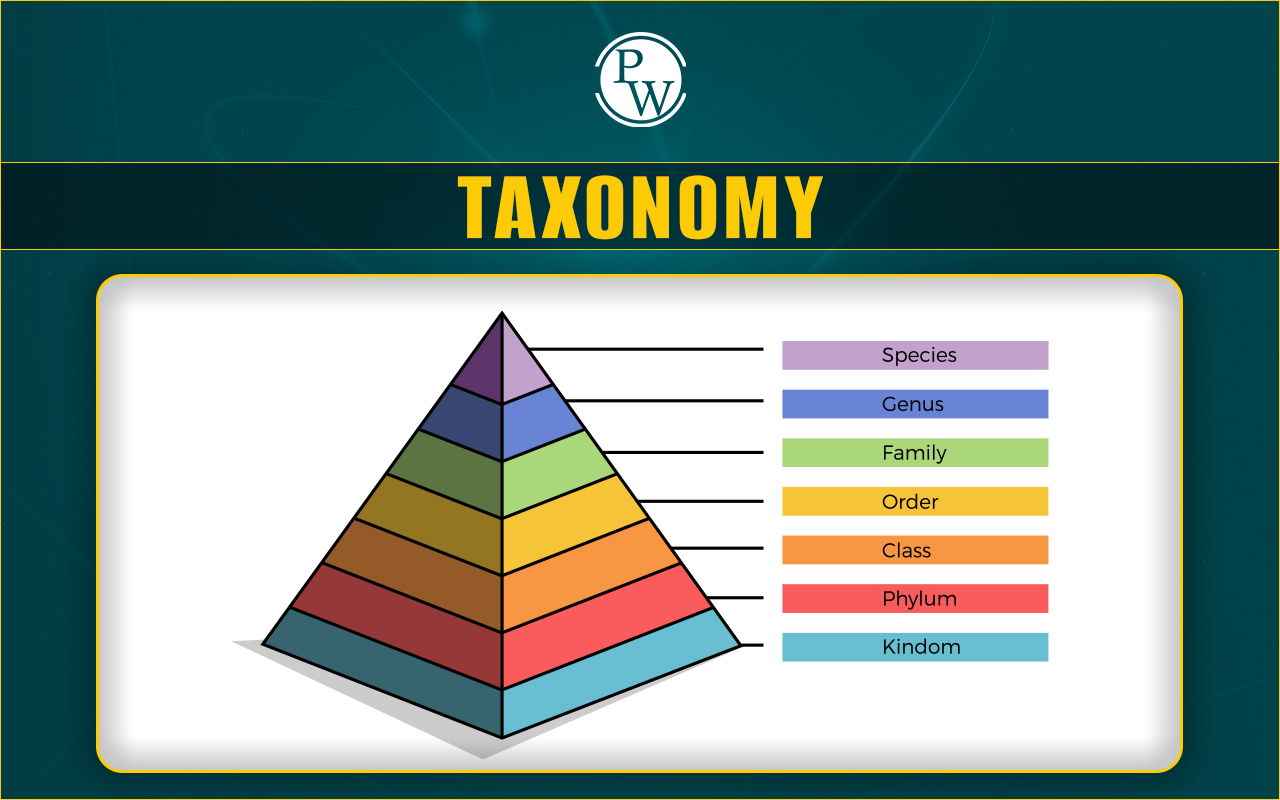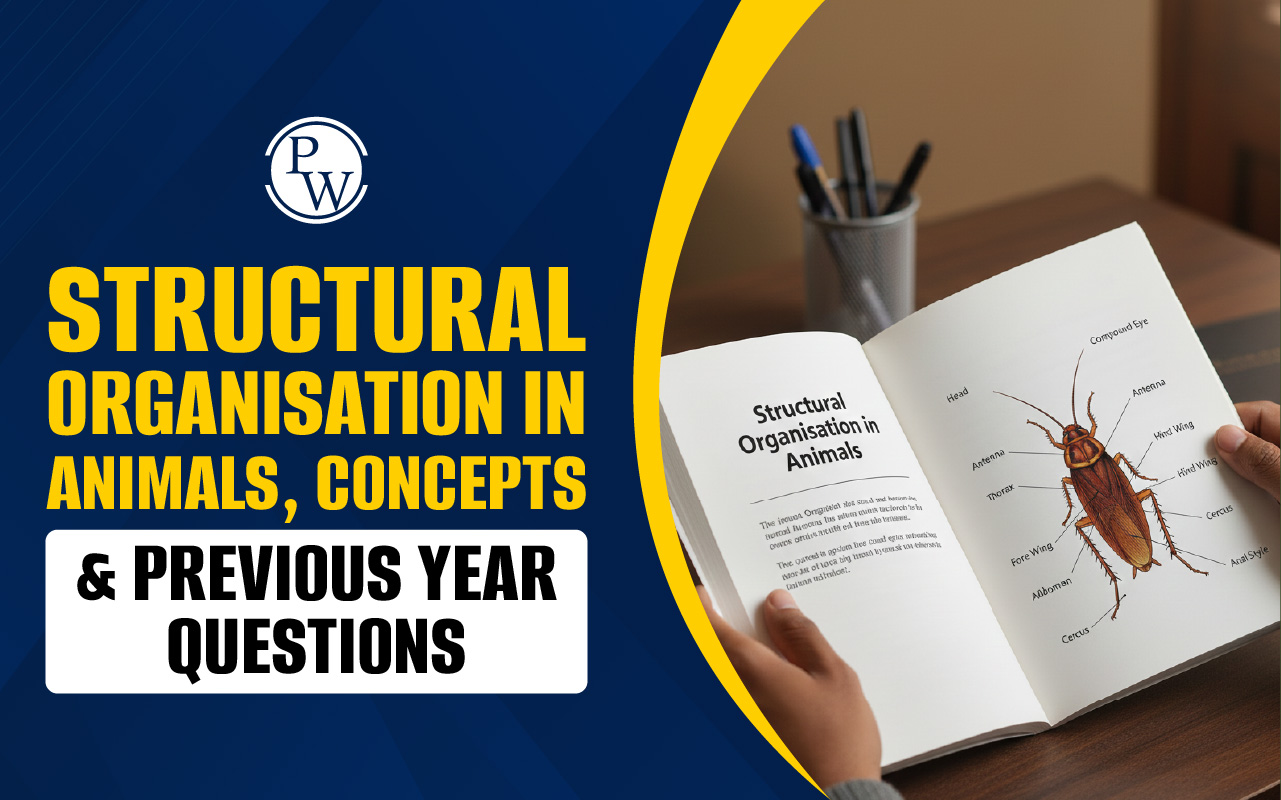

Taxonomy is the science of classifying living organisms into groups based on their shared features. It helps scientists organize the vast diversity of life on Earth into categories, making it easier to study and understand. Taxonomy involves identifying organisms, giving them names, and placing them into a hierarchical system. This topic is important for the NEET Exam , and it is an important part of the NEET biology syllabus .
Taxonomy Definition
Taxonomy is the scientific discipline focused on naming, describing, and classifying all living organisms, including plants, animals, and microorganisms. It involves the systematic arrangement of organisms into groups, called taxa , which are given specific taxonomic ranks. These ranks can be organized into a hierarchy, allowing smaller groups to be aggregated into larger, more inclusive ones. The principal ranks used in modern taxonomy include domain, kingdom, phylum (or division in botany), class, order, family, genus, and species. This hierarchical system enables the classification of organisms from broad categories down to specific species. Swedish botanist Carl Linnaeus is credited as the founder of the modern system of taxonomy, known as Linnaean taxonomy. His method not only established a ranked classification system but also introduced the use of binomial nomenclature, a two-part naming system for identifying organisms.Modern Trends in Taxonomy
Modern taxonomy has evolved significantly with advancements in technology and scientific knowledge. New tools and approaches have transformed the way organisms are classified, making the process more accurate and reflective of evolutionary relationships. The major trends in modern taxonomy include the following:Cytotaxonomy
Cytotaxonomy focuses on the study of the structure, number, and behavior of chromosomes in cells to classify organisms. Differences in chromosome structure and number can provide important clues about the relationships between species and help in identifying new species.Chemotaxonomy
Chemotaxonomy classifies organisms based on their chemical composition, such as proteins, enzymes, and secondary metabolites. This method is particularly useful in studying plants, fungi, and microorganisms, where chemical profiles can reveal evolutionary relationships that may not be obvious from physical characteristics.Molecular Taxonomy
Molecular taxonomy uses genetic information, such as DNA , RNA , and protein sequences, to classify organisms. This approach allows scientists to compare the genetic makeup of different species and determine evolutionary relationships more accurately than relying solely on physical traits. It has led to the discovery of new species and reclassification of others based on genetic evidence.Numerical Taxonomy
Numerical taxonomy, or phenetics, involves the use of mathematical methods to classify organisms based on their overall similarity. It relies on computers to analyze a large number of characteristics quantitatively and assigns organisms to groups based on how similar they are to each other. While this method does not consider evolutionary history, it helps in grouping organisms with similar traits efficiently.Plant Taxonomy
Plant taxonomy is a specialized branch of taxonomy that deals with the classification, identification, and naming of plants. It involves grouping plants based on their evolutionary relationships and shared characteristics, such as structure, reproduction, and genetic traits. The principal taxonomic ranks in plant taxonomy include kingdom, division (equivalent to a phylum in animals), class, order, family, genus, and species . This classification system helps botanists and researchers study the diversity of plant life, aiding in research, conservation efforts, and agricultural advancements. Linnaeus' system, particularly binomial nomenclature, remains central to naming plants scientifically.Animal Taxonomy
Animal taxonomy is the scientific study focused on classifying and naming animals based on their evolutionary relationships and physical characteristics. Like plant taxonomy, it follows the hierarchical taxonomic ranks, from kingdom to species, which allows the organization of animals into meaningful groups. In modern animal taxonomy, animals are classified under the kingdom Animalia and are further divided into phyla, classes, orders, families, genera, and species . This classification helps zoologists understand animal diversity, their adaptations, and their evolutionary history. Linnaeus' binomial nomenclature plays a crucial role in naming and categorizing animal species as well.Basic Process of Taxonomy
Taxonomy follows a step-by-step process to study, classify, and name organisms. The basic steps include characterization, identification, classification, and nomenclature. Each step is essential for understanding an organism’s place in the biological world.Characterization
Characterization is the first step in taxonomy, where scientists study and observe an organism’s features in detail. These characteristics can be external, such as shape, size, or color, or internal, like cell structure or genetic makeup. Through characterization, important traits that define the organism are identified, allowing scientists to compare it with other organisms.Identification
Identification is the process of determining what kind of organism it is based on the characteristics observed. By comparing the traits of the organism to known organisms, scientists can identify whether it is a new species or belongs to an already known species.Classification
Once identified, the organism is classified into a hierarchical system. Classification is the process of organizing organisms into groups according to their shared characteristics and evolutionary connections. The main levels of classification include kingdom, phylum, class, order, family, genus, and species. The aim is to place the organism in the correct group according to its traits and ancestry. Example : Humans are classified as follows:| Kingdom | Animalia |
| Phylum | Chordata |
| Class | Mammalia |
| Order | Primates |
| Family | Hominidae |
| Genus | Homo |
| Species | sapiens |
Nomenclature
Nomenclature is the final step, where the organism is given a scientific name using a standard naming system. The most commonly used system is binomial nomenclature, introduced by Linnaeus. Each organism is given a two-part name: the first part represents the genus, and the second part is the species. This naming ensures that each organism has a unique and globally recognized name.Benefits of Taxonomy
- Provides a systematic way to categorize organisms for easier study.
- Ensures universal, standardized naming of species.
- Helps trace evolutionary relationships among species.
- Aids in identifying species for biodiversity protection.
- Critical for identifying pathogens and managing crops.
- Enables predictions about traits and behaviors of similar species.
- Supports various biological fields like genetics and ecology.
MCQs of Taxonomy
Q6. In taxonomy, the first step is:
- Identification
- Nomenclature
- Classification
- Characterisation
Q8. The term taxonomy was proposed by
- Theophrastus
- A.P De Candolle
- Aristotle
- R.H Whittaker
Q9. Identify the process by which the name of living organisms is given:
- Nomenclature
- Identification
- Classification
- Characterization
Answers of MCQs of Taxonomy
Ans1 . Identification,| NEET Exam Important Links | |
|---|---|
| NEET Biology Syllabus | NEET Biology Diagrams |
| NEET Biology MCQ | NEET Biology Chapter wise Weightage |
| NEET Biology Notes | NEET Previous Year Question papers |
Taxonomy FAQs
Q. Who is the father of taxonomy?
Ans. Carl Linnaeus is widely recognized as the father of taxonomy for his work in developing the classification system and binomial nomenclature used to categorize organisms.
Q. What is the Linnaeus Classification System?
Ans. The Linnaeus Classification System is a hierarchical system developed by Carl Linnaeus to classify organisms based on shared traits. It introduced taxonomic ranks (kingdom, phylum, class, etc.) and the binomial nomenclature for naming species, such as Homo sapiens for humans.
Q. What do you mean by taxonomy?
Ans. Taxonomy is best defined as the scientific study of classifying, naming, and organizing organisms into groups based on shared characteristics and evolutionary relationships.
Q. What is Plant Taxonomy?
Ans. Plant taxonomy is a branch of taxonomy that focuses on the classification and naming of plants based on their evolutionary relationships, structure, and genetic traits. It uses ranks like kingdom, division, class, and species.
Q. What is Animal Taxonomy?
Ans. Animal taxonomy is the scientific study of classifying and naming animals based on their characteristics and evolutionary relationships. It follows a similar hierarchy as plant taxonomy, from kingdom to species, to organize animal diversity.
Q. What are the 7 taxonomy classifications?
Ans. The 7 primary taxonomy classifications are Kingdom, Phylum, Class, Order, Family, Genus, and Species.
Talk to a counsellorHave doubts? Our support team will be happy to assist you!

Free Learning Resources
PW Books
Notes (Class 10-12)
PW Study Materials
Notes (Class 6-9)
Ncert Solutions
Govt Exams
Class 6th to 12th Online Courses
Govt Job Exams Courses
UPSC Coaching
Defence Exam Coaching
Gate Exam Coaching
Other Exams
Know about Physics Wallah
Physics Wallah is an Indian edtech platform that provides accessible & comprehensive learning experiences to students from Class 6th to postgraduate level. We also provide extensive NCERT solutions, sample paper, NEET, JEE Mains, BITSAT previous year papers & more such resources to students. Physics Wallah also caters to over 3.5 million registered students and over 78 lakh+ Youtube subscribers with 4.8 rating on its app.
We Stand Out because
We provide students with intensive courses with India’s qualified & experienced faculties & mentors. PW strives to make the learning experience comprehensive and accessible for students of all sections of society. We believe in empowering every single student who couldn't dream of a good career in engineering and medical field earlier.
Our Key Focus Areas
Physics Wallah's main focus is to make the learning experience as economical as possible for all students. With our affordable courses like Lakshya, Udaan and Arjuna and many others, we have been able to provide a platform for lakhs of aspirants. From providing Chemistry, Maths, Physics formula to giving e-books of eminent authors like RD Sharma, RS Aggarwal and Lakhmir Singh, PW focuses on every single student's need for preparation.
What Makes Us Different
Physics Wallah strives to develop a comprehensive pedagogical structure for students, where they get a state-of-the-art learning experience with study material and resources. Apart from catering students preparing for JEE Mains and NEET, PW also provides study material for each state board like Uttar Pradesh, Bihar, and others
Copyright © 2025 Physicswallah Limited All rights reserved.
Get App











